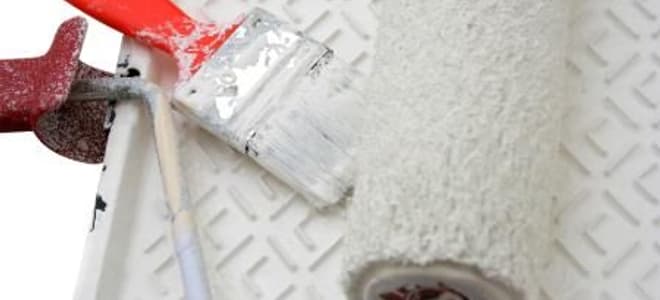I've been taking a few days off in order to get some home repairs done before dear daughter comes back from college -- with her dog -- in a couple of weeks. The thing that has been most pressing has been painting: both a railing between our kitchen and "great room", as well as part of our deck. Both of those areas are accessible to the pooch, and would be difficult to paint with a romping puppy around. This is not a onerous task! I love painting (it's one of the ways I earned my way through college and seminary). There's immediate satisfaction when the task is done. All of the nicks and scratches are covered over; it all looks clean again, and folks are happy!
I also know, from years of experience, that painting can hide more than simple blemishes. It can mask some pretty serious problems. Filling in a crack with spackle, and then painting over it may make the wall look smooth, but the crack may indicate settling of the building's foundation -- not good. Spraying sealer over water stains, and then painting over THAT, doesn't solve the problem of leaky pipes or bad roofing. In some ways or circumstances, painting can be like putting a veil over the reality that is the structure: we won't see what's truly there.
"Veils" were brought up in a presentation I attended earlier this week. The particular reference was to something being "veiled in print." That is, we are such a print-oriented (although now we might also be video-oriented) culture that we often confuse what is "written" about something (or, I suppose, "filmed" about something) with the thing itself. One could make the argument, for example, that we have substituted text-messages for real, face-to-face, conversations. Or, witness the debate over how sacred texts (including the US Constitution) should be interpreted: ought one be faithful to the words, or the spirit behind the words.
This temptation to confuse the representation with reality troubles me. The representation can never capture the whole. Indeed the representation can hide the whole, much like a veil can hide what's behind it. There may be no intention to deceive, but, over the last couple of days, I've taken a bit more care in reading, just to be sure I'm not missing what's really important.
I also know, from years of experience, that painting can hide more than simple blemishes. It can mask some pretty serious problems. Filling in a crack with spackle, and then painting over it may make the wall look smooth, but the crack may indicate settling of the building's foundation -- not good. Spraying sealer over water stains, and then painting over THAT, doesn't solve the problem of leaky pipes or bad roofing. In some ways or circumstances, painting can be like putting a veil over the reality that is the structure: we won't see what's truly there.
"Veils" were brought up in a presentation I attended earlier this week. The particular reference was to something being "veiled in print." That is, we are such a print-oriented (although now we might also be video-oriented) culture that we often confuse what is "written" about something (or, I suppose, "filmed" about something) with the thing itself. One could make the argument, for example, that we have substituted text-messages for real, face-to-face, conversations. Or, witness the debate over how sacred texts (including the US Constitution) should be interpreted: ought one be faithful to the words, or the spirit behind the words.
This temptation to confuse the representation with reality troubles me. The representation can never capture the whole. Indeed the representation can hide the whole, much like a veil can hide what's behind it. There may be no intention to deceive, but, over the last couple of days, I've taken a bit more care in reading, just to be sure I'm not missing what's really important.
Namasté,
Gary


No comments:
Post a Comment